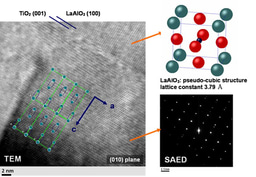A Fluid Dynamics Framework for Space-Time: Unifying Relativity, Quantum Mechanics, and Cosmology
This research paper introduces a novel framework modelling space-time as a compressible fluid, unifying general relativity, quantum mechanics, and cosmology. Gravity emerges from pressure gradients as mass creates low-pressure voids in the fluid. Time is entropy flow.
Published in Physics

Like
Be the first to like this
Full paper link - https://www.preprints.org/manuscript/202505.1027/v3
This research paper introduces a novel framework modelling space-time as a compressible fluid, unifying general relativity, quantum mechanics, and cosmology. Gravity emerges from pressure gradients as mass creates low-pressure voids in the fluid. Time is entropy flow, with dilation in suppressed entropy regions. Black holes are cavitation zones with finite-density cores, resolving singularities, while wormholes form stable pressure tunnels without exotic matter. Quantum phenomena, like entanglement and tunnelling, arise as fluid oscillations and pressure collapses. The model derives Einstein’s field equations as a fluid state law and accurately predicts planetary orbits, such as Mercury, Mars, Venus, and Earth (e.g., Earth’s orbit within 0.011% error) (Appendix B), aligning with observations like lensing and redshift. Novel predictions include chromatic lensing, gravitational wave echoes, and CMB anisotropies. This intuitive, observationally robust theory offers a cohesive framework for understanding the universe’s fundamental dynamics across scales.
Section 1—Introduction
1.1. Background and Motivation
Modern theoretical physics rests on two cornerstone theories: general relativity (GR) and quantum mechanics (QM). GR describes gravity as space-time curvature induced by mass-energy, governing cosmic structures, while QM dictates probabilistic subatomic behaviour, underpinning the Standard Model and all fundamental forces except gravity. Their deep incompatibility—GR’s classical continuity versus QM’s discrete probabilistic nature—poses a significant challenge. Efforts like string theory, loop quantum gravity, or holographic models often lack testable predictions or remain mathematically incomplete, suggesting a deeper physical substrate may unify them. This theory draws inspiration from historical concepts of a dynamic space-time medium, as explored in [Mudassir, M. (2025)] [37], which revisits ether-like models and thermodynamic gravity interpretations. Furthermore, the present framework demonstrates remarkable empirical success, accurately deriving the orbits of planets such as Mercury, Mars, Venus, and Earth with errors as low as 0.011% for Earth’s orbital period, validating its physical consistency and predictive power. This crisis and empirical promise motivate a new paradigm unifying relativity, quantum mechanics, and cosmology.
1.2. Proposal: Space-Time as a Fluid
This paper proposes a groundbreaking paradigm: space-time is a compressible fluid medium with pressure, flow, wave behavior, and structural deformation. Physical phenomena emerge as follows:
-
Gravity arises from pressure-gradient forces.
-
Mass forms voids displacing the medium.
-
Time results from entropy flow.
-
Quantum tunneling manifests as localized tension collapse.
-
Entanglement is modeled as synchronized oscillations in the fluid’s microstructure.
This framework unifies all major physical forces and phenomena through pressure-driven dynamics. Governing equations for motion, curvature, entropy, and quantum resonance are interconnected, treated as physical fluid mechanics effects rather than abstract constructs.
1.3. Historical Foundations
The model builds on key works:
-
Jacobson (1995) [5], deriving Einstein’s field equations as a thermodynamic identity.
-
Verlinde (2011) [10], proposing gravity as an entropic force.
-
Braunstein et al. (2023) [9], demonstrating quantum gravity analogs via fluid simulations.
-
Morris & Thorne (1988) [4], introducing traversable wormholes with negative pressure.
-
Montani et al. (2024) [10], modeling cosmology with “wet fluid” behavior.
-
Thorne, K. S. (1994) [3], providing insights into relativistic phenomena.
This work’s novelty lies in its comprehensive unification of relativistic, quantum, and cosmological domains through a fluid-dynamics lens, inspired by historical space-time medium concepts [37].
1.4. The Fluid Hypothesis—Core Assumptions
We assume that:
-
Space-time has density (ρ), pressure (p), and viscous properties (η),
-
Mass creates hollows or voids in this medium, reducing local pressure,
-
All forces arise from restoring gradients (just like buoyancy or vortices),
-
Entropy and information are carried by fluid divergence,
-
Time emerges from the rate of entropy dispersion in this system.
This is not a metaphor. We model space-time as an actual medium obeying:
-
Euler–Navier–Stokes–like dynamics for macroscopic behavior,
-
Wave equations and resonance conditions at the quantum scale,
-
Thermodynamic laws for entropy, temperature, and irreversibility,
-
Curvature response to pressure via an Einstein-like fluid field equation.
The diagram illustrates how mass creates a “dent” in the space-time fluid, inducing a pressure gradient that drives gravitational attraction. The surrounding fluid flows inward toward the mass, mimicking gravity as a pressure gradient −1ρ∇p. The arrows represent the flow of the fluid medium, not a literal deformation of geometric space.
1.5. From Geometry to Substance
Einstein’s view of curvature was geometrically elegant—but devoid of substance. Our theory reinterprets curvature as a dynamic tension in the medium. The Einstein field equations themselves can be expressed as a state equation of the fluid:
Where:
DvDt=−1ρ∇p+fcurvature+fentropy+fquantum
-
DvDt: Material (convective) derivative—acceleration of the medium
-
∇p: Local pressure gradient causing flow
-
ρ: Space-time fluid density
-
fcurvature: Stress-tensor-induced deformation
-
fentropy: Irreversible entropy flow (driving time)
-
fquantum: Non-local and tunneling resonance behaviors
This interpretation transforms GR from a geometric art into a physical science of cosmic fluid mechanics. [Einstein, 1915] [1]
Figure 1.2. Linking General Relativity and the Fluid Dynamics Model of Space-Time On the left, the Einstein field equation Gμν=8πGc4Tμν expresses gravity as the curvature of space-time. On the right, the fluid dynamics model reinterprets gravity as the result of a pressure gradient in a compressible space-time fluid: Dv→(x)=−1ρ∇p+f→curvature+f→entropy+f→quantum Fluid flow lines (black arrows) indicate the inward movement of the fluid, while the pressure gradient (red arrow) drives gravitational acceleration. This unified visualization bridges Einstein’s geometric formulation and the fluid-based model of gravity.
This diagram illustrates how Einstein’s field equations can be reinterpreted as a fluid-dynamics system. The pressure gradient in the space-time fluid produces acceleration, expressed by:
where:
Dv→(x)=−1ρ∇p+f→curvature+f→entropy+f→quantum,
-
Dv→(x)—Material Derivative of Velocity
Represents the total acceleration experienced by a fluid element as it moves through the space-time medium. It combines local changes in velocity and the effect of fluid flow. Mathematically, it is the material (or convective) derivative:
Dv→(x)=Dv→(x)Dt=∂v→∂t+v→⋅∇v→.
-
v→(x)—Velocity Field
The local velocity of the space-time fluid at position x. Shown by red streamlines in the diagram, it indicates the fluid’s flow direction and magnitude.
-
−1ρ∇p—Pressure Gradient Force
Drives the fluid toward lower-pressure regions. This term is the primary driver of acceleration in the absence of external forces.
-
f→curvature—Curvature-Induced Force
Accounts for the tension from space-time curvature induced by mass-energy.
-
f→entropy—Entropy-Driven Force
Represents the arrow of time and irreversible processes within the space-time fluid.
-
f→quantum—Quantum-Induced Force
Includes effects from quantum tunneling, entanglement, and non-local phenomena.
Acceleration (Orange Arrow)
The resultant effect of all forces combined. It shows the net acceleration a fluid element experiences due to pressure gradients and external forces.
Curved Spacetime Region
Visualizes a massive object creating a pressure hollow in the space-time fluid. Red streamlines illustrate fluid flow converging inward, modeling gravitational attraction as a pressure-gradient effect.
Section 2—Space-Time as a Compressible Fluid
2.1. Conceptual Foundation
...............................................
follow link above for full paper.
Follow the Topic
Quantum Correlation and Entanglement
Physical Sciences > Physics and Astronomy > Quantum Physics > Quantum Correlation and Entanglement
General Relativity
Physical Sciences > Physics and Astronomy > Gravitational Physics > General Relativity
Special Relativity
Physical Sciences > Physics and Astronomy > Theoretical, Mathematical and Computational Physics > Special Relativity








Please sign in or register for FREE
If you are a registered user on Research Communities by Springer Nature, please sign in